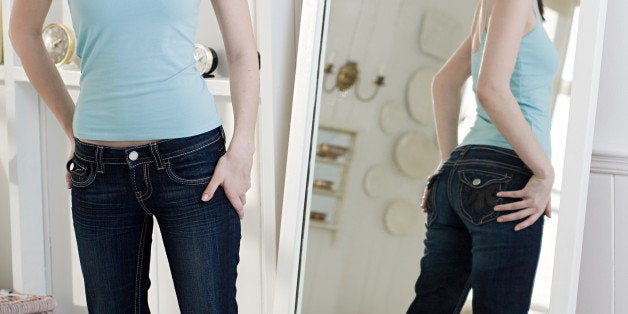
 Co-authored by Jordan Rullo, Ph.D., Mayo Clinic clinical psychologist and certified sex therapist.
Co-authored by Jordan Rullo, Ph.D., Mayo Clinic clinical psychologist and certified sex therapist.
Recently, an untouched photo of supermodel Cindy Crawford went viral on the internet. There are lots of photos of Cindy Crawford on the internet; why in the world did this particular photo go viral? Was she juggling fire? Engaged in some daring feat? No. The image went viral simply because it was unedited, un-photo shopped, untouched. This says a lot about our society.
In the U.S., women are held to a thin-ideal or an ideal of body perfection. Not only are women encouraged to be thin, but they have to be thin with curves (i.e., control your weight and change your body structure too!!). Women are bombarded by messages of this perfect and thin-ideal. So much so, that children as young as three years old have internalized this thin-ideal. Preschoolers have shown to attribute more positive characteristics to thin figures and more negative characteristics to overweight figures. They've also stated that they'd be more likely to be friends with the thin figures. Preschoolers!
Much of this thin-ideal is perpetuated by the media's portrayal of women. Just think, if by age 3, little girls have already internalized the thin-ideal, imagine the strength of these thin-ideal messages by the time these girls are teenagers or young adults. In fact, we know that the more one is exposed to the media, the more likely she is to internalize the thin ideal, be dissatisfied with her body, and engage in disordered eating. We also know that being dissatisfied with one's body is linked to low self-esteem and depression. This thin-ideal is hurting girls and women.
How do we unravel these years of thin-ideal internalization? First, society needs to make a change. This Cindy Crawford photo should be the norm, not an anomaly. Although society is making small changes (e.g., for the first time ever, a size 22 plus size model scored a major modeling contract in the U.S.), we have a long way to go. In the meantime, unraveling these thin-ideal messages requires recognizing that these messages exist and that we are perpetuating them. This is important, because we can't change something unless we know it exists. The second step is developing self-compassion. It is not our fault that we have internalized these messages. We know that media teaches girls and women to self-objectify and attend to and prioritize appearance. We are not to blame; this is the society in which we were raised. The third step is trying something different. If we don't self-objectify or prioritize outward appearance, what could we do with that energy instead? Perhaps develop an appreciation of our body? The more we appreciate our bodies, the more we are satisfied with our bodies. I know I'm really grateful for my hands as I type this blog. Is there any part of your body that you appreciate?
